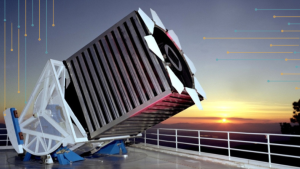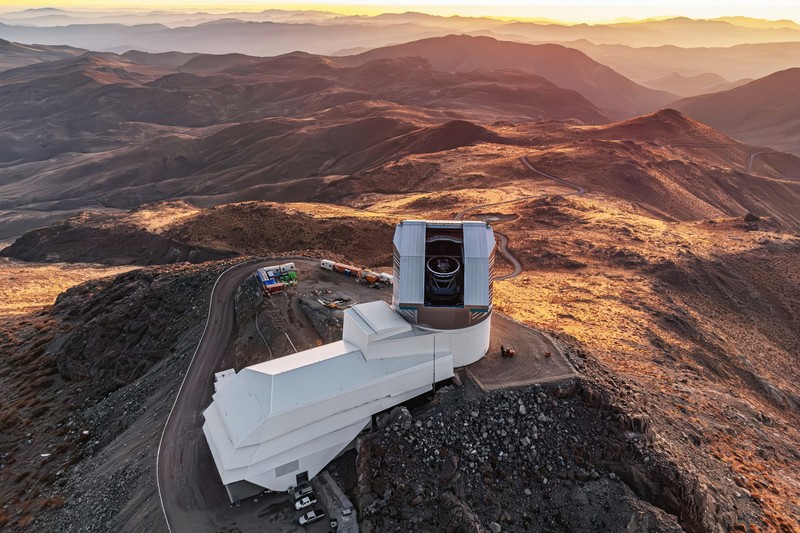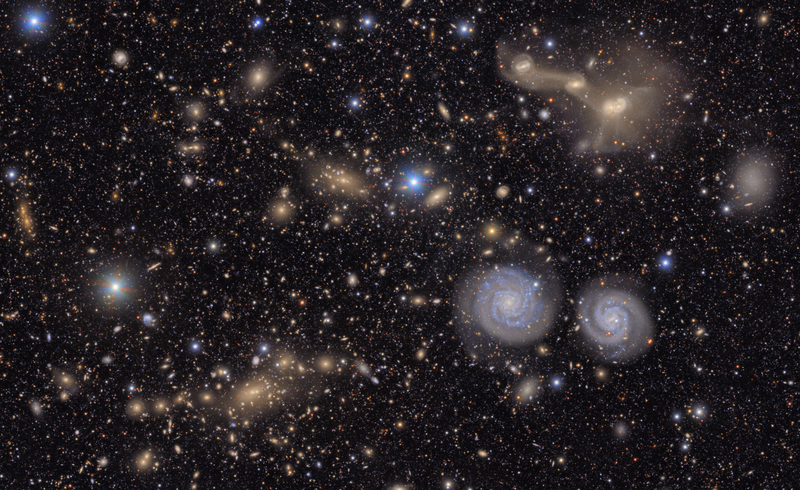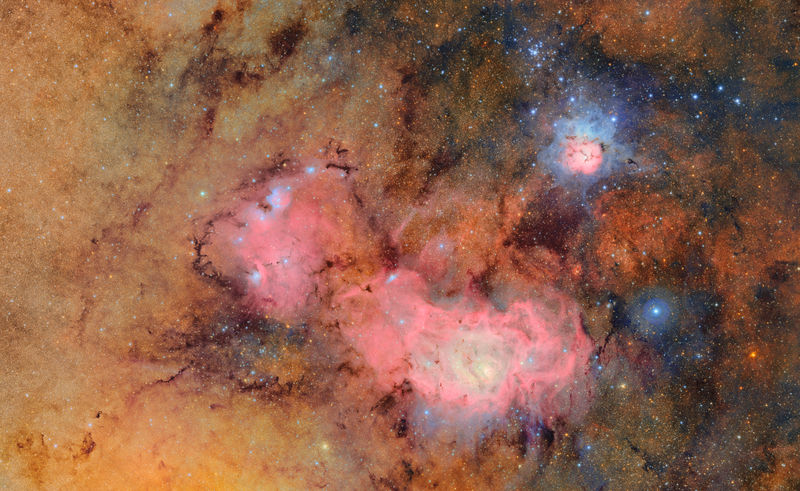In the early 2000s, the massive scientific return from the Sloan Digital Sky Survey made it clear that there are questions we can only answer by investing in systems that survey the sky and inventory everything visible. From learning about the distribution of galaxies by type to exploring the distribution of stars by age, that survey gave us a glimpse of just how much we don’t yet know.

The SDSS survey used a 2.5-m telescope to initially explore an 8,000 square degree area of the sky, and has since added new areas and new specialty programs. With both imaging and spectral capabilities, this workhorse of a system has given us a 3-dimensional map of our galaxy and the surrounding universe… or at least of the regions in that initial 8000 square degree region and the smaller regions added later. The data was amazing, and in some instances, repeated observations allowed for transitory behaviors to be spotted, … but SDSS was NOT designed to show us how the sky changes… it was designed to map a moment in time.
And its data made us want more – it made us want a larger telescope that could look at a larger region of the sky, and that could get us data night after night after night that would let us see everything that flickers, flares, and moves in the sky. We wanted supernovae – all of them, please and thank you. We wanted large-scale structure – the whole sky, if possible. We wanted to find every potentially deadly asteroid and every pulsating variable star. We wanted data – the kind of data that technology didn’t even exist to store or transport.
But nothing gets between an astronomer and their data.
Well… nothing except time and money…
2010 Decadal Survey Prioritized Large Survey
While folks had been talking about a giant telescope to do a giant survey since the 1990s, it would take SDSS’s success to get all of us on board. The 2010 Decadal Survey for Astronomy made that giant telescope, then called the Large Synoptic Survey Telescope, or LSST, the highest priority in astronomy.
The collaboration was built. Private donors were chased. The mirror was started in 2007. Grants were applied for. Construction in Chile started in 2014.
A Telescope Built for Speed

The LSST would be an 8.4 m telescope with an excessively wide, 3.5 degree diameter field of view, and a prime focus camera that would redefine astronomical imaging. For those of you who know telescopes, this monster has a f/1.234 focal ratio!
The LSST camera combines 189 4k x 4k CCD chips into a massive array, with each pixel capturing 0.2 arcsec of the sky. Put another way, if you hold a hair at arm’s length, it is 1 arcsec wide, and LSST would have 5 pixels imaging that hair’s width.
It is really hard to comprehend just how much data is in each LSST image. I’m writing this episode with a 43” 4k monitor in front of me. My eyes can’t make out individual pixels, and it only has 3840×2160 pixels. One image from the LSST camera would require more than 200 of my monitors just to look at the bottom 2160 pixels. Those 200 monitors would span more than 2 football fields. Now… I don’t have great eyeballs, and my monitor is not a retina display. If you have perfect eyeballs, you could smash things down… but … folks… it would take 212 yards of 43” 4k televisions to see the bottom section of 1 image! These are big images.
The LSST would be an 8.4 m telescope with an excessively wide, 3.5 degree diameter field of view, and a prime focus camera that would redefine astronomical imaging. For those of you who know telescopes, this monster has a f/1.234 focal ratio!
The LSST camera combines 189 4k x 4k CCD chips into a massive array, with each pixel capturing 0.2 arcsec of the sky. Put another way, if you hold a hair at arm’s length, it is 1 arcsec wide, and LSST would have 5 pixels imaging that hair’s width.
It is really hard to comprehend just how much data is in each LSST image. I’m writing this episode with a 43” 4k monitor in front of me. My eyes can’t make out individual pixels, and it only has 3840×2160 pixels. One image from the LSST camera would require more than 200 of my monitors just to look at the bottom 2160 pixels. Those 200 monitors would span more than 2 football fields. Now… I don’t have great eyeballs, and my monitor is not a retina display. If you have perfect eyeballs, you could smash things down… but … folks… it would take 212 yards of 43” 4k televisions to see the bottom section of 1 image! These are big images.
Rubin Observatory First Look
On Monday, June 23, the Rubin Observatory team released 2 images built from multiple exposures of the region containing the Triffid and Lagoon Nebula, and the region around the Virgo Cluster. This was just 10 hours of data, and they already captured millions of galaxies and stars and thousands of asteroids… in fact, that Monday morning, they submitted 2104 new asteroids to the Minor Planet Center outside Boston. It’s estimated that Rubin will bring the total number of known asteroids to 5 million.

We don’t yet have the details on if LSST meets or exceeds its design specifications, but those images let us know that this telescope is enough.
As expressed by Matt Mountain, “It is not every day that a revolution stares you in the face, but that is precisely what the Rubin Observatory team — together with our colleagues at the NSF and DOE — has delivered with these first images. Astronomy is on the brink of transformation!”
LSST will map out the sky from 12N to 72S, a region 18,000 square degrees in size. Each 30-second exposure in one of 6 filters will reach magnitudes 22 or higher… Every point in the Survey area will be imaged roughly 100 times per year, and we are going to have literal movies of stars moving, asteroids and dwarf planets orbiting, and stars pulsating over days and years.
When I was an undergraduate in the 1990s, folks joked about how a sample of 6 objects was statistically interesting and, for some kinds of things, was actually a large sample. LSST takes that 6 and asks, would you like that to be 6 million or 6 billion…
Right now, the Rubin Observatory team is finishing the checkout process – putting the telescope through all its motions and fine-tuning how it works. Later this year, the survey will start in earnest, and we can expect data release 1 toward the end of 2026. I’m hoping we’ll start seeing science, maybe as early as the AAS meeting in January, and as soon as we have it, we’ll be bringing it to you right here on EVSN.

